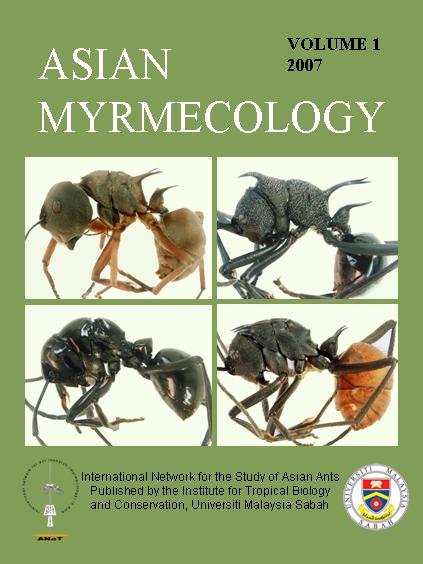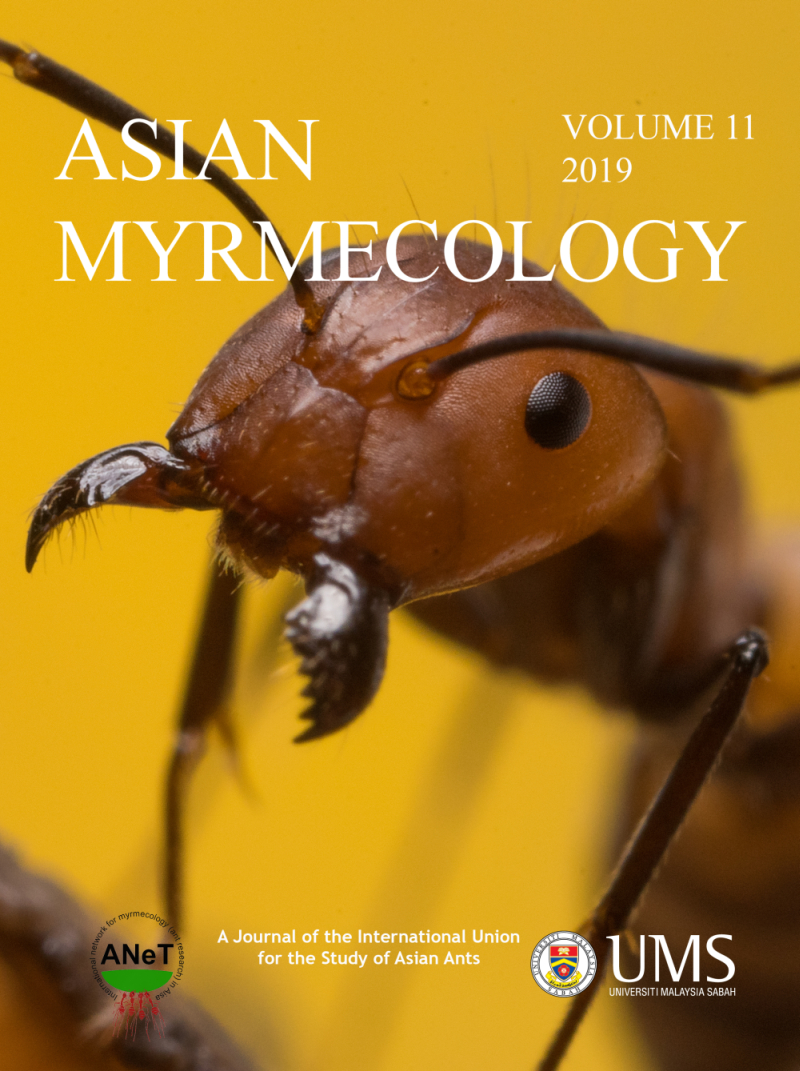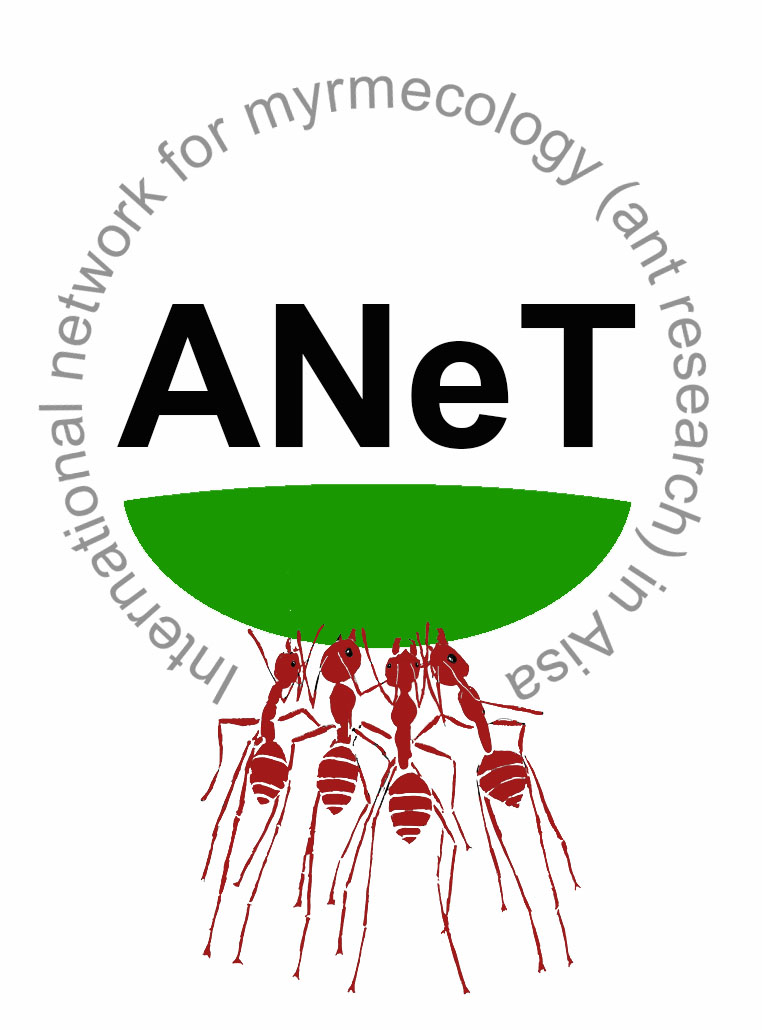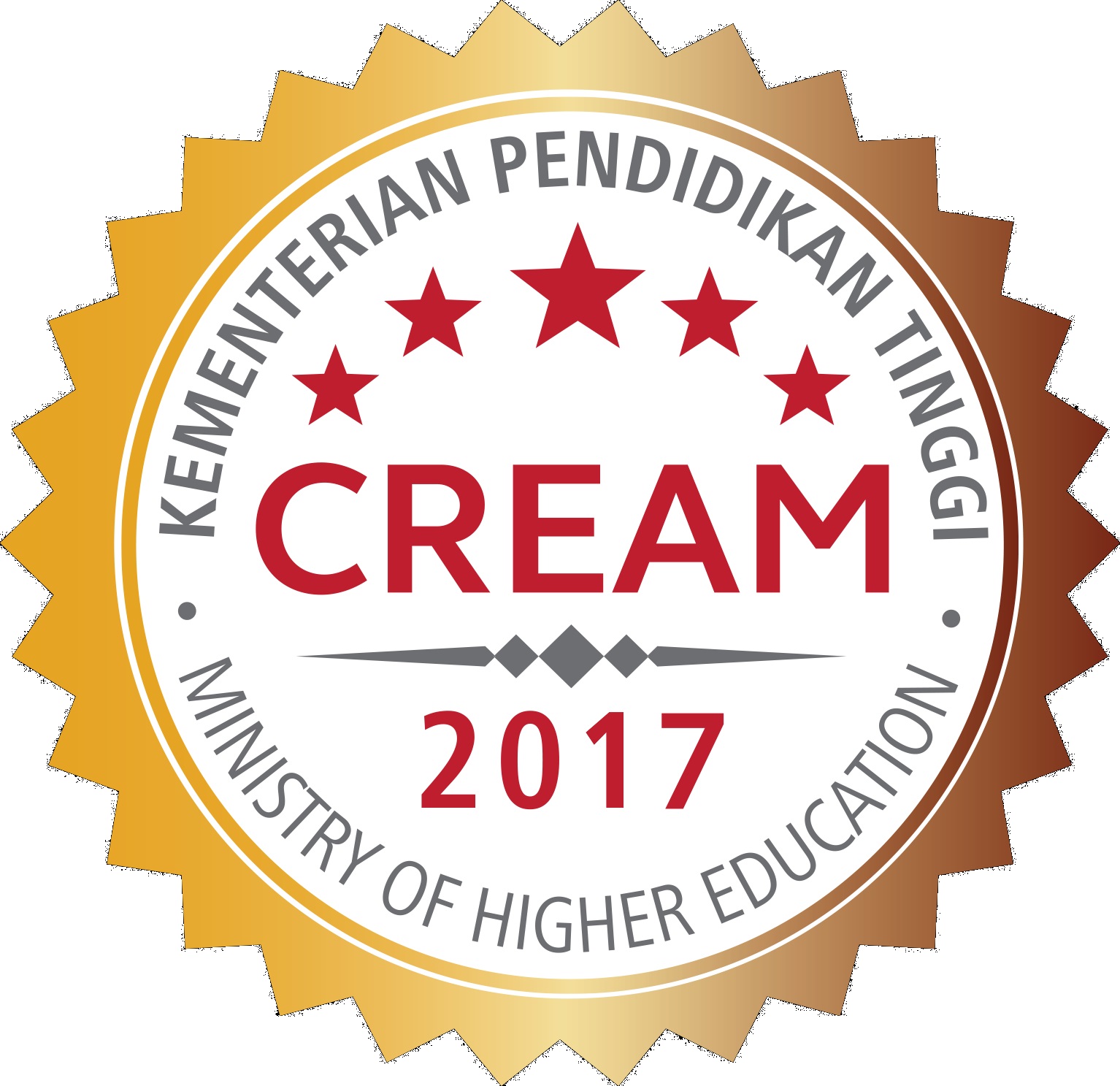ASIAN
MYRMECOLOGY
Image: François Brassard
Ecology and Distribution
Asian Myrmecology, Volume 1, pages 81-99, published August 2007
DOI: 10.20362/am.001008
A review of the nesting habits and socioecology of the ant genus Polyrhachis Fr. Smith
SIMON K.A. ROBSON1* & RUDOLF J. KOHOUT2
Abstract:
We provide a summary of the nesting and socioecological habits of 197 species of Polyrhachis ants. Nesting habits range from subterranean to terrestrial, lignicolous, lithocolous and arboreal with varying levels of consistency at the subgeneric level. Species are predominantly either subterranean or terrestrial nesting within the subgenera Campomyrma, Chariomyrma and Hagiomyrma; mainly arboreal nesting within Aulacomyrma, Cyrtomyrma, Hedomyrma, Hemioptica, Myrmatopa and Myrmothrinax; lignicolous within Hedomyrma, and variable within Myrma, Myrmhopla and Polyrhachis. The majority of species within a particular subgenus demonstrate a consistent nesting type but a few species can be highly variable, demonstrating both subterranean and arboreal habits. The inclusion of larval silk in the nests is correlated almost entirely with arboreal nesting, but the presence of spider silk in the nests of at least four species suggests caution when inferring silk origin. Pupal cocoons are present in all but Cyrtomyrma and Myrmatopa. Polydomy and polygyny are known from a number of species and may be more common in arboreal nesting species, but limited data sets prevent definitive interpretations at this time.
Keywords:
Polyrhachis, Formicidae, nesting ecology, socioecology, mating systems
Get PDF (648K):
1School of Marine & Tropical Biology, James Cook University Queensland 4811, Australia
2Biodiversity Program, Queensland Museum, PO Box 3300, South Brisbane, Queensland, 4101, Australia
*Corresponding author: Simon.Robson@jcu.edu.au



